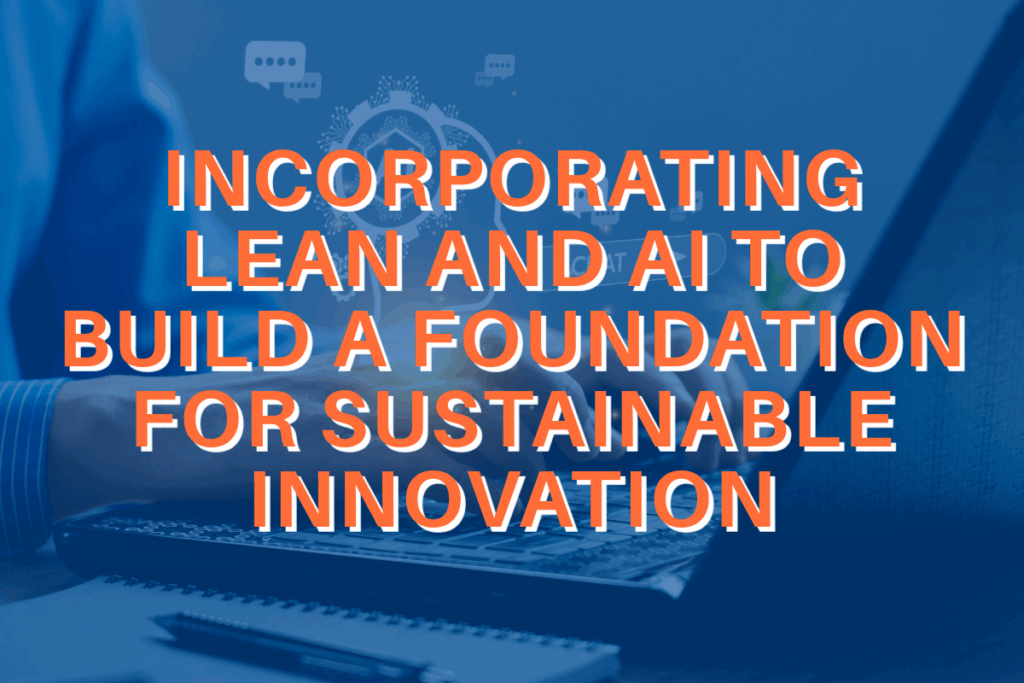Earlier this year, we explored how Artificial Intelligence (AI) could accelerate Lean transformation when applied thoughtfully.
In just six months, the AI landscape has shifted dramatically. New generative AI tools are emerging almost daily, and entire industries are experimenting with how to integrate them into their operations.
While the possibilities are exciting, speed without clarity creates chaos. AI can be a powerful enabler of value creation, but only when paired with the discipline and principles of Lean thinking. Without that foundation, organizations risk amplifying waste, confusing teams, and damaging trust.
Why Lean Thinking Must Come First
According to Dr. W. Edwards Deming, often considered the father of modern quality management, “If you can’t describe what you are doing as a process, you don’t know what you are doing.” Deming’s decades of work in statistical process control and organizational transformation laid the foundation for Lean and continuous improvement practices worldwide, which makes his perspective especially relevant in today’s conversations about AI.
Just as process clarity was essential for driving quality in the manufacturing revolution, it remains critical now. AI will fail to deliver results if applied to unstable, poorly understood processes or introduced without considering the human factors that sustain change. To succeed, organizations must integrate culture, process, and technology—in that order.
Culture: Create Psychological Safety and Build Trust
Before introducing AI, leaders must create a psychologically safe environment where people feel valued, empowered, and unafraid to speak up. As Deming reminded us, organizations must “drive out fear so that everyone may work effectively for the company.” This principle applies as much to AI adoption today as it did to quality transformation decades ago.
AI can spark fear and resistance if employees view it as a threat to their roles or don’t understand its purpose. Without trust, teams will withhold ideas, hide mistakes, and resist change. Leaders who embrace Deming’s philosophy can build confidence by showing that AI is here to augment human capability, not replace it.
Key Actions:
- Clearly communicate that AI is meant to augment human capability, not replace it.
- Involve frontline teams in design and testing, fostering ownership and confidence.
- Celebrate learning, not just results, so teams feel safe to experiment.
Process: Understand, Simplify, Standardize
Lean provides the operating system that ensures AI creates value instead of chaos.
Organizations often fail when they attempt to automate broken processes, simply embedding waste more deeply.
The essential sequence:
- Grasp and Understand the Current State
Use value stream mapping to see how work and information truly flow, revealing bottlenecks and waste. - Simplify the Process
Remove unnecessary steps and complexity to create stability and improve flow. - Standardize the Process
Establish repeatable methods that ensure data quality, a critical foundation for AI to generate accurate insights.
Technology: Automate and Optimize with AI
Only after culture and process are in place should AI be introduced to amplify improvement.
When implemented at the right stage, AI becomes a powerful tool to:
- Enhance decision-making with accurate, real-time data.
- Automate repetitive tasks so teams can focus on value-added problem-solving.
- Support continuous improvement cycles with deeper insights and faster feedback.
The key is to start small and purposeful. Companies can pilot AI in a contained area, such as automating data collection on a production line or using predictive analytics in scheduling, where results are visible and measurable. These early wins build trust and confidence, laying the groundwork for broader adoption.
Without the foundation of culture and process, AI may move your organization faster, but in the wrong direction.
How AI and Lean Work Together
AI isn’t about replacing people; it’s about amplifying human creativity, judgment, and problem-solving. By automating routine or mundane work, AI frees teams to focus on higher-level strategic thinking and innovation; the kind of work that actually drives growth and transformation.
The two pillars of Lean provide a framework for responsible AI adoption:
- Continuous Improvement – AI accelerates experimentation, learning, and PDCA cycles.
- Respect for People – Employees must feel empowered, not threatened, by new technology.
AI can help fix broken systems, but only people can design, improve, and sustain them.
Practical AI Use Cases That Enhance Lean
Since our original January blog post, several AI use cases have proven especially valuable when paired with Lean practices:
- Predictive Maintenance
AI-enabled sensors and analytics can monitor equipment health in real time, spotting anomalies before they turn into costly breakdowns. This reduces downtime, extends asset life, and ensures resources are used effectively.
Lean synergy: Supports Total Productive Maintenance (TPM) and boosts Overall Equipment Effectiveness (OEE) by proactively eliminating unplanned interruptions. - Dynamic Scheduling and Flow Optimization
AI can simulate thousands of production scenarios in seconds, adjusting schedules based on demand fluctuations, setup requirements, and labor availability. This helps balance capacity while reducing idle time and bottlenecks.
Lean synergy: Reinforces takt-driven scheduling, smooths production flow, and reduces the waste of waiting and excess inventory. - Accelerated Problem-Solving
By analyzing large, complex datasets, AI can quickly identify trends, correlations, and likely root causes. This provides teams with actionable insights that improve the speed and accuracy of A3 problem-solving and corrective actions.
Lean synergy: Speeds up PDCA (Plan-Do-Check-Act) cycles and gives problem-solving teams the confidence of data-backed decision-making. - Customer Experience Insights
AI tools can sift through unstructured data like reviews, call transcripts, and survey responses to uncover emerging customer needs and pain points. This enables companies to pivot faster to meet expectations.
Lean synergy: Ensures continuous improvement stays aligned with the voice of the customer, guiding innovation where it delivers the most value.
Common Pitfalls When Implementing AI
AI tools are powerful, but without Lean guardrails and strong organizational culture, they can amplify existing problems instead of solving them. Here are five pitfalls to watch for — and how to avoid them:
- Starting Too Big Without Focus
The Pitfall: Launching AI across the enterprise without stabilizing processes or setting clear objectives.
Why It Matters: AI magnifies process variation; without stability, it automates chaos.
How to Avoid It: Pilot in one value stream, use PDCA to refine, and tie success to metrics like OEE, lead time, or customer satisfaction.
- Overlooking Psychological Safety
The Pitfall: Teams see AI as a threat, sparking fear and resistance.
Why It Matters: Without trust, adoption stalls. Research shows psychological safety fuels innovation.
How to Avoid It: Communicate AI’s purpose, involve frontline teams early, and encourage safe-to-fail experiments.
- Mistaking Tools for Strategy
The Pitfall: Treating AI as a silver bullet instead of part of a broader value-creation plan.
Why It Matters: Fragmented efforts waste resources and dilute results.
How to Avoid It: Align AI with strategic priorities, use Hoshin Kanri to connect projects, and regularly review progress.
- Leadership Detachment
The Pitfall: Leaders delegate AI initiatives and disengage.
Why It Matters: Like Lean, AI requires visible leadership commitment.
How to Avoid It: Leaders should spend time at the gemba, reinforce desired behaviors, and participate in executive-level Kaizens to model support.
- Treating AI as a Silo
The Pitfall: Positioning AI as a standalone initiative instead of embedding it in the Lean system.
Why It Matters: AI loses relevance when it’s not tied to daily management.
How to Avoid It: Use AI insights to inform kaizens, embed outputs in visual management, and treat adoption as an ongoing experiment, not a one-off rollout.
Sustainable Growth Through Lean and AI
AI innovation is accelerating and will continue reshaping industries. The organizations that thrive will be those that pair advanced technology with the proven principles of Lean transformation.
As Dr. W. Edwards Deming reminded us, “Learning is not compulsory… neither is survival.” In today’s landscape, learning means more than adopting new tools, it means creating alignment between culture, process, and technology so that AI drives lasting value rather than short-term disruption.
If you’re exploring how to integrate AI into your operational excellence journey and want to discuss practical next steps, our Practitioners are here to help. Reach out to start a conversation about how Lean and AI together can unlock sustainable growth.



